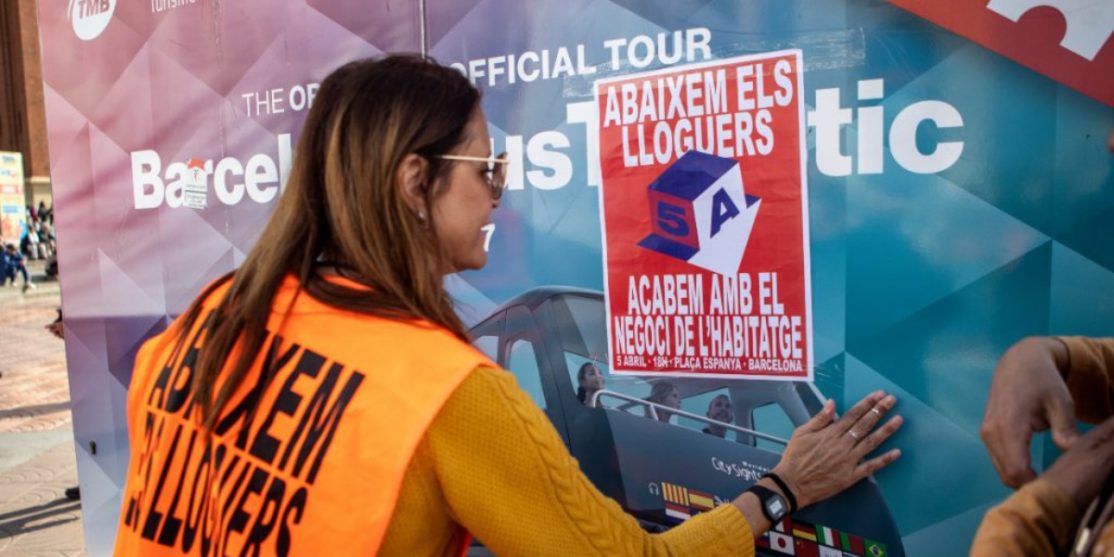Road to dignity. The future passed through Europe
14N made it into history as the first major European strike. And there is no going back. On 24 November we’ll be taking the streets again to keep our agora open.
14N made it straight into history as the first major European strike. Millions of people blocking the streets, marching, picketing, surrounding parliaments and sharply rejecting austerity and the Troika’s government.
From such a transnational insurgency, there is going back. There is surely no going back for movements, that fully practiced a common conflict within a European space radically opposed to speculators, bankers and technocrats and to their attacks on the 99% by way of MOUs and confidence votes in the parliaments of global finance.
This strike did not just produce a suspension of services or a series of industrial actions within the various national labour sectors. And here’s the point. The movements that have emerged from within and against the crisis took the strike in their hands, claiming toma la huelga. Millions of people protested in hundreds of towns: forty European unions, but also school kids and precarious researchers, university students and community workers, unemployed persons and migrants.
The new poor of Europe, the downgraded middle classes, were defiantly at the centre of a strike made of resonating practices and virtual twittering, of affinities between local experiments of new radical democracy and transnational claims and demands. A packed demo surrounded the Portuguese parliament; in both Italy and Spain, schools and universities were shut down against the constant devaluation of knowledge and continuous budget cuts; Italian ministers busy negotiating industrial downsizing were put to flight by blue collar workers; transport blocks multiplied at the local level all over Spain; rallies took place from downrated France to Poland, from Belgium and the UK to Germany – the belly of the beast and the preferred destination of migrant piigs.
#14nriseup #14nit #14nalacalle
For a timeline of the Spanish strike: tomalahuelga.net
Workers in Sulcis, Sardinia, force ministers to flee from site in helicopter:
A proliferation of revolts that received a unanimous answer from European debtocracies: don’t question austerity, no choice is given. The violence perpetrated against protesters throughout Europe clearly spoke of a military approach in handling the squares. There can be no agora: this is what European technocracies stated, in the piigs in particular. If in Greece such a violence has become a tragic habit, in Spain police brutality – as reported by many demonstrators – reached levels unseen since the dictatorship era. Seemingly, the heavy charges and manhunts in the centre of Rome recalled the outrageous events of Genova 2001. In all cities, ‘law enforcement’ forces provoked and charged the demos, attacked journalists who tried reporting the violence, and harmed and threatened a huge number of young people. Many protesters were held in police stations and some were transferred to prison.
YouTube | 13 years old hit in Tarragona
YouTube | Charges in front of Parliament in Lisbon
YouTube | Charges to bar demo from reaching Italian Parliament
In Italy, 14N was preceded and followed by an intense week of mobilisation, during which the Ministers of Austerity were met by protests in many towns. In Rome, on the day of the strike, the police tried to bar fifty thousand people from heading towards the Parliament, as happens in other European capitals. Faced with the demonstrators determination to continue marching, riot police initially charged the first lines of demonstrators – protected by the book block – and then attacked the demo on the side, leaving no way out. While thousands of school kids tried to escape the police madness, they continued charging wildly and savagely – all the way into the lanes, bridges and neighbourhoods of the city centre.
If we insist on all this is not to play the victims, or defining the police as the enemy of protesters. Rather, we believe 14N marked a turning point and the beginning of a whole new phase for the crisis. The violence of austerity found its match in police brutality – one politically aimed at terrorising those who protest. The cries of beaten demonstrators were accompanied by the disarming silence of mainstream media.
A violence aimed at shutting up thousands of young people – sometimes extremely young people – opposing the social butchery and not willing to give up and play the part of the no future ‘crisis generation’. The teargas shot from the Ministry of Justice in Rome on people running down the street speak of that.
It’s not about the excesses of some cop. It’s the violence of debt trying to scare us, seclude us from each other and break any resistance. It’s not much about the impunity guaranteed to the police by political forces, it’s the violence of capital, the violence of the new original accumulation of eurocolonialism exerted within its own political borders.
YouTube | Teargas shot from Italian Ministry of Justice
To those of thought they could scare us, we answer that not only have they failed. If anything, they’ve managed to convince us even more to continue taking the streets and keeping open the agora of the 99% – the transnational space of intersection of radical democratic practices, virtually circulating and multiplying throughout Europe.
An agora in which to reaffirm our determination to defend ourselves using our bodies and our practices of resistance, spend our days building relations and composing social coalitions, express the continual extension of our networks and digital-political devices.
We’re not going back home. See you in the streets again on 24 November, for the Italian education strike, to keep our agora open. We’ll be everywhere and we’ll be more.
Roma, 23-11-2012
#14N European General Strike_by Unicommon:
#14N Roma Occupiamo lo Sciopero_by Teatro Valle:




